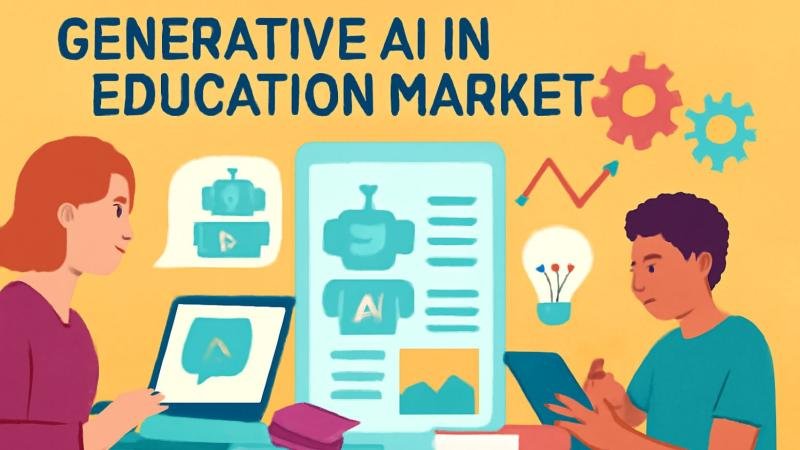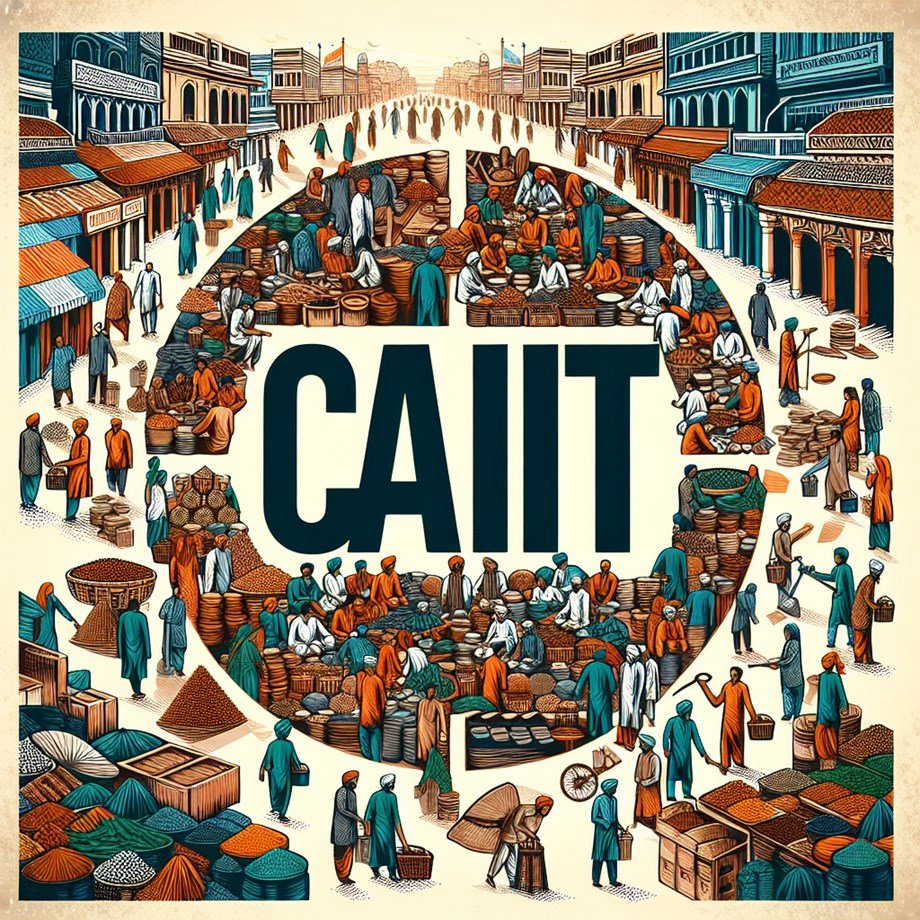Education
Top 5 Google Veo 3 Alternatives for Educational Video Creation

As the need for engaging, scalable, and accessible educational video content continues to grow, AI tools like Veo 3 AI video generator have sparked major interest across the education sector. However, with high costs and limited regional access, Veo 3 is not always the most practical option for teachers, instructional designers, or training professionals.
Fortunately, several Veo 3 alternatives now offer flexible and affordable solutions for AI-powered video creation. Whether you’re designing curriculum content, building e-learning modules, or enhancing classroom engagement with visual storytelling, the following tools provide excellent alternatives to Veo 3 AI Video Generator — without sacrificing quality or usability.
1.Videomaker.me – Best Overall Veo 3 Alternative
Videomaker.me is one of the most accessible and practical AI video generators available today, offering both Veo 3 Fast and Veo 3 Quality modes. It’s a powerful Veo 3 alternative for educators, trainers, marketers, and creators who need fast, high-quality video content without geographic restrictions or high costs. The platform also includes a free trial, allowing users to explore full Veo 3 AI video generator features such as lip-sync, voice integration, and cinematic transitions with no upfront commitment.
Key features of Videomaker.me
Videomaker.me supports both Veo 3 Fast mode and Veo 3 Quality mode, giving users the flexibility to choose between speed and higher fidelity when generating videos. In addition to the standard Veo 3 models, the platform also offers a more budget-friendly Pixverse model, making it a practical solution for users who need voice-enabled videos but are working with limited budgets. The platform also includes a variety of AI video templates. Instead of typing complex Veo 3 prompts, users can simply upload an image to generate a video with matching style and structure. This makes it especially suitable for educators and creators who want results quickly without technical barriers. Additionally, Videomaker.me allows users to purchase extra credits as needed, offering greater flexibility compared to platforms that require fixed monthly subscriptions.
In short, if you’re looking for an easy, affordable way to access Veo 3 AI capabilities—whether for teaching, training, or content creation—Videomaker.me is a smart and reliable solution.
2. Runway – Advanced AI Editing Platform
Runway has established itself as one of the most innovative platforms in AI video generation, making it a powerful Veo 3 alternative for users seeking more creative control and technical depth. Known for its Gen-4 model, Runway allows users to generate, edit, and stylize videos using text prompts, images, or even existing video clips. Unlike Veo 3, which is currently limited in public availability, Runway is live, accessible, and widely used by professionals in advertising, media, and content creation.
Key Features of Runway
Runway is an innovative AI-powered platform specializing in video generation and editing, leveraging advanced models like the Gen-4 for high-quality narrative-driven content and the recently launched Aleph for transformative video manipulation. Aleph is a state-of-the-art in-context video-to-video model that enables multi-task visual generation, generating entirely new camera angles while preserving scene action and motion, modifying styles, lighting, wardrobe, makeup, and environments, and even creating infinite camera coverage or inpainting effects.Gen-4 excels in image-to-video generation with durations up to 16 seconds, Turbo mode for faster processing, exceptional consistency in characters and scenes via visual references, realistic motion simulation, and enhanced prompt understanding for cinematic outputs like short films and music videos.
If you’re looking for a mature and highly capable AI video platform that blends automation with creative freedom, Runway is one of the most complete Veo 3 alternatives on the market today.
3. InVideo – Best for Beginners and Business Use
InVideo is a highly practical Veo 3 alternative designed for speed, simplicity, and versatility. It caters especially well to marketers, entrepreneurs, and content creators who need to produce polished videos quickly without diving into complex software. With a browser-based interface and a rich set of templates, InVideo makes it possible to generate engaging videos from scripts, blog posts, or social media ideas in minutes.
Key Features of InVideo
InVideo offers solid voice and subtitle synchronization, ensuring that narration and visuals remain cohesive and clear across all devices. Although it doesn’t offer full character lip-syncing like some advanced platforms, its audio alignment is well-suited for marketing, educational, and promotional content. The platform includes hundreds of AI-powered templates, allowing users to rapidly tailor videos to different formats like YouTube, Instagram, or LinkedIn. While Veo 3 free access is not available, InVideo includes a generous free plan that allows you to test key features before upgrading. For users focused on productivity and brand consistency, InVideo delivers fast, customizable results without complexity.
Whether you’re launching a product, building your online presence, or automating content production, InVideo is a dependable and budget-friendly Veo 3 AI video generator alternative.
4. TryVeo3.ai – Veo 3 Free Trial
TryVeo3.ai is a unique AI video generator powered by Veo 3, offering a specialized alternative for creating high-quality videos without geographical restrictions. It allows users to produce engaging content effortlessly, ideal for educational videos, tutorials, and internal business communications, with a free trial available.
Key Features of TryVeo3.ai
TryVeo3.ai offers free access for users to explore its core features without commitment. It supports real-time audio and lip-sync synchronization, ensuring that voice and visuals stay naturally aligned. Users can create videos using either text prompts or uploaded images, allowing for flexible content generation depending on workflow needs. Whether for tutorials, marketing, or internal communication, the platform adapts well to different use cases with clear pricing and minimal setup.
5. Hailuo AI – Cost-Effective Visual Storyteller
Hailuo AI, developed by MiniMax, stands out as a leading AI video generator, offering exceptional visual fidelity and affordability compared to competitors like Google’s Veo 3. Known for its Hailuo 02 model, it excels in creating high-quality, silent videos with remarkable cinematic realism, making it a top choice for creators prioritizing detailed visuals and budget-friendly options. Launched in 2024, Hailuo has rapidly gained traction among VFX artists, motion designers, and social media creators due to its intuitive interface and generous free tier.
Key Features of Hailuo
Hailuo AI is a dynamic platform that transforms text and image inputs into visually stunning, short-form videos, typically up to 6–10 seconds in 1080p resolution. Its Noise-aware Compute Redistribution (NCR) architecture ensures sharp, fluid outputs by optimizing computational resources during training, resulting in superior motion dynamics and prompt adherence. The platform’s standout features include its Director Mode, which allows natural language camera controls (e.g., “zoom in on the character”), and a robust physics engine that simulates realistic environmental interactions like fluid dynamics and collisions, ideal for action-packed or nature-focused scenes. Hailuo’s affordability—$0.25–$0.50 per short video—makes it significantly cheaper than Veo 3, with a free tier offering 100 daily credits for experimentation.
Despite its strengths, Hailuo AI has limitations, such as the lack of native audio integration and slower generation speeds compared to some competitors. For indie creators, marketers, or who seeking high-quality video generation without breaking the bank, Hailuo AI offers an accessible and powerful alternative to pricier platforms like Veo 3.
Choosing the Right Veo 3 Alternative to Power Your Creation
While the Veo 3 AI has garnered attention for its audio synchronization and high quality, its high price and regional restrictions mean it’s currently out of reach for many users. In the meantime, there are several well-developed platforms that can serve as practical, reliable Veo 3 alternatives depending on your needs.
Choose the platform that works best for you based on your use case, content goals, and workflow preferences. Each of these platforms offers unique approaches to AI video generation and is worth exploring if you’re looking for alternatives to Veo 3 AI Video Generator today.
Education
Why Hotels Struggle with Tech Adoption, And How AI + Education Can Drive Digital Transformation

Ask any hotelier what frustrates them about technology, and you’ll hear a familiar refrain:
“Why does our industry lag so far behind in digital transformation and AI?”
Compared to retail, travel tech, and even restaurants, hotels adopt operational technology at a crawl.
We know the common reasons:
- Past tech projects that didn’t deliver ROI.
- Solutions that felt designed in boardrooms, not lobbies.
- Budgets stretched thinly by OTAs and rising costs.
All true. But in my 15+ years in hospitality tech, I’ve seen a deeper barrier, one that explains why even when budgets are available, adoption still stalls.
🚨 The biggest barrier is hoteliers’ lack of clear understanding about the quantifiable value of technology, especially AI-driven tools, in daily operations.
Understanding Before Adoption
Hospitality is a pragmatic business. Owners and GMs don’t adopt tools because they’re trendy; they adopt when they understand:
- WHAT is the solution and the problem it solves,
- HOW it works in a hotel context,
- WHY is it the right fit for their specific operation.
Without this clarity, skepticism wins. And digital transformation and AI stalls.
AI in Hospitality: Marketing vs Operations
Right now, most AI adoption in hotels is happening at the guest-facing edge:
- Chatbots for direct booking,
- Automated email offers,
- Upselling engines.
These feel safe: they’re visible, promise revenue, and rarely touch core operations.
But the bigger opportunity lies in operational AI:
- Scheduling staff with fairness and efficiency,
- Assigning rooms based on readiness and preferences,
- Optimizing energy usage,
- Predicting maintenance before breakdowns.
The irony? These are the areas where AI delivers the fastest ROI. Yet adoption is lowest because hoteliers don’t clearly see the value until it’s proven in their own P&L.
Why Digital Transformation Stalls Without Education
The word “digital transformation” can intimidate smaller properties. It sounds like a multimillion-dollar IT overhaul.
But when explained simply, it’s not about technology replacing hospitality, it’s about using AI and digital tools to remove friction from staff and guests alike.
The real obstacle isn’t the tech. It’s the education gap:
- Vendors pitch features instead of explaining workflows.
- Hoteliers hear jargon instead of ROI.
- The conversation skips the basics, the WHAT, HOW, and WHY.
From Confusion to Confidence: The WHAT, HOW, WHY Framework
If we want adoption, we need to reset the conversation.
✅ WHAT→ Define the category in plain terms (RMS, CRM, AI scheduler).
✅ HOW→ Show how it integrates into hotel life without disruption.
✅ WHY → Share specific, quantifiable ROI proven by peers.
This is how we move hoteliers from fear to trust, and from hesitation to adoption.
Quick Wins: The Proof Hotels Need
Digital transformation doesn’t need to begin with massive projects. It can start with quick AI wins that build confidence:
- Staff Scheduling AI → Cuts overtime, reduces turnover, shows ROI in 2–3 payrolls.
- Room Assignment AI → Prevents “not-ready” complaints, improves guest satisfaction.
- Energy Optimization AI → Lowers bills immediately; frees budget for guest-facing upgrades.
- Predictive Maintenance AI → Avoids costly outages, extending asset life.
Each of these is a small but powerful step that makes digital transformation feel real , not theoretical.
A Real Case Study: DoubleTree by Hilton Dartford Bridge
One striking example comes from the DoubleTree by Hilton Dartford Bridge a 170-room hotel in East London. Struggling under steep energy costs and system inefficiencies, the hotel partnered with Spacewell Energy and GETGEN to transform its infrastructure with AI-enhanced systems, without compromising guest comfort. Spacewell | A Nemetschek Company
What they did:
- Conducted a feasibility study of energy systems and identified inefficiencies in their Building Management System (BMS).
- Installed a purpose-built energy center with three Combined Heat & Power (CHP) units supplying electricity and hot water more efficiently.
- Upgraded controls via a modern Tridium BMS, added variable speed drives, and optimized system controls across guest areas. Spacewell | A Nemetschek Company
Results achieved within 12 months:
- Energy cost reduction: 65%, saving approximately £376,911
- Operational and sustainability uplift: advanced integration ready for predictive maintenance and further efficiencies Spacewell | A Nemetschek Company
Why This Matters for Smaller Hotels
Hospitality is under pressure. Labor shortages. Rising costs. Fierce OTA competition.
Hotels that delay digital transformation risk more than inefficiency. They risk irrelevance.
But hotels that adopt AI-powered operational tools strategically, with education and trust, can:
- lower costs,
- improve staff morale,
- and deliver smoother guest experiences.
That’s not just transformation. That’s a competitive advantage.
While large chains like Hilton can pilot and scale AI-enhanced systems, many small and mid-size hotels are still running technology in silos, a PMS here, a booking engine there, housekeeping schedules in Excel, energy systems on manual control. The result? Data stays fragmented, processes remain manual, and managers lack a single view of performance.
The good news is that cloud delivery has changed the economics of digital transformation. What once required servers, IT staff, and multi-year rollouts can now be deployed modularly, paid for as a subscription, and scaled with occupancy.
That’s why now, not “someday”, is the moment for independents and mid-size hotels to step forward. The cloud makes it possible to unify operations, start with one AI-powered quick win, and expand without heavy risk or capital investment.
Enter: The AIDURIX Compass
This is exactly why we built the AIDURIX Compass, not as another tech product, but as a navigation system for hoteliers starting their digital journey.
The Compass is designed to help hotels:
- Identify the biggest operational friction points,
- Understand the WHAT, HOW, and WHY available AI tools,
- Choose quick-win pilots that prove ROI fast,
- Build confidence to scale transformation step by step.
Because here’s the truth: digital transformation in hospitality isn’t a giant leap. It’s a guided journey. And every journey needs a compass.
The Call to Vendors
If you’re a tech vendor: stop overselling features. Start overeducating the market. When hoteliers understand categories, they buy confidently.
The Call to Hoteliers
If you’re a hotel leader: don’t fear “digital transformation.” Start small. Pick one AI-powered quick win. Track ROI. Build momentum.
But don’t chart the journey blind. That’s why we created the AIDURIX Compass — a navigation tool to help you spot operational friction points, explore AI solutions, and design a transformation path that fits your property’s size, staff, and goals.
🚀 Ready to see it in action? Test-drive the interactive demo here: AIDURIX Compass Demo
Education
Generative AI in Education Market Hits New High

HTF MI just released the Global Generative AI in Education Market Study, a comprehensive analysis of the market that spans more than 143+ pages and describes the product and industry scope as well as the market prognosis and status for 2025-2032. The marketization process is being accelerated by the market study’s segmentation by important regions. The market is currently expanding its reach.
Major companies profiled in Generative AI in Education Market are: OpenAI, Google DeepMind, Anthropic, IBM Watson, Microsoft, Pearson, Coursera, Duolingo, Chegg, Turnitin, Quizlet, BYJU’S, Khan Academy, Udemy, Blackboard, Instructure, McGraw-Hill, Carnegie Learning, Brainly, ScribeSense, Sana Labs, Knewton.
Request PDF Sample Copy of Report: (Including Full TOC, List of Tables & Figures, Chart): https://www.htfmarketinsights.com/sample-report/4380310-generative-ai-in-education-market?utm_source=Altab_OpenPR&utm_id=Altab
HTF Market Intelligence projects that the global Generative AI in Education market will expand at a compound annual growth rate (CAGR) of 31.2% from 2025 to 2033, from USD 2.5 Billion in 2025 to USD 22.4 Billion by 2033.
The following Key Segments Are Covered in Our Report
By Type
AI Tutoring Bots, Essay Generators, Assessment Tools, Adaptive Learning Engines, AI Content Creation
By Application
Personalized learning, Homework help, Exam prep, Teacher support, Curriculum design
Definition: Generative AI in education refers to AI models that create original learning content such as quizzes, explanations, and lesson plans while adapting to student needs. These tools improve personalization, automate grading, and support teachers in lesson planning. With rapid adoption in online and hybrid learning, generative AI is revolutionizing how students engage with content. Ethical and accessibility challenges remain, but investment and government interest are pushing growth.
Market Trends:
• AI tutors, Multimodal learning, AR/VR integration, Gamified AI assistants, Data-driven adaptive curricula
Market Drivers:
• Personalization demand, Digital transformation in schools, Remote learning growth, Teacher workload reduction, EdTech funding
Market Challenges:
• Ethical concerns, Bias in AI models, Teacher acceptance, Data privacy, Accessibility gaps
Dominating Region:
North America
Fastest-Growing Region:
Asia-Pacific
Buy Now Latest Edition of Generative AI in Education Market Report: https://www.htfmarketinsights.com/buy-now?format=1&report=4380310
The titled segments and sub-section of the market are illuminated below:
In-depth analysis of Generative AI in Education market segments by Types: AI Tutoring Bots, Essay Generators, Assessment Tools, Adaptive Learning Engines, AI Content Creation
Detailed analysis of Generative AI in Education market segments by Applications: Personalized learning, Homework help, Exam prep, Teacher support, Curriculum design
Geographically, the detailed analysis of consumption, revenue, market share, and growth rate of the following regions:
• The Middle East and Africa (South Africa, Saudi Arabia, UAE, Israel, Egypt, etc.)
• North America (United States, Mexico & Canada)
• South America (Brazil, Venezuela, Argentina, Ecuador, Peru, Colombia, etc.)
• Europe (Turkey, Spain, Turkey, Netherlands Denmark, Belgium, Switzerland, Germany, Russia UK, Italy, France, etc.)
• Asia-Pacific (Taiwan, Hong Kong, Singapore, Vietnam, China, Malaysia, Japan, Philippines, Korea, Thailand, India, Indonesia, and Australia).
Have different Market Scope & Business Objectives; Enquire for customized study: https://www.htfmarketinsights.com/report/4380310-generative-ai-in-education-market?utm_source=Altab_OpenPR&utm_id=Altab
Generative AI in Education Market Research Objectives:
– Focuses on the key manufacturers, to define, pronounce and examine the value, sales volume, market share, market competition landscape, SWOT analysis, and development plans in the next few years.
– To share comprehensive information about the key factors influencing the growth of the market (opportunities, drivers, growth potential, industry-specific challenges and risks).
– To analyze the with respect to individual future prospects, growth trends and their involvement to the total market.
– To analyze reasonable developments such as agreements, expansions new product launches, and acquisitions in the market.
– To deliberately profile the key players and systematically examine their growth strategies.
FIVE FORCES & PESTLE ANALYSIS:
In order to better understand market conditions five forces analysis is conducted that includes the Bargaining power of buyers, Bargaining power of suppliers, Threat of new entrants, Threat of substitutes, and Threat of rivalry.
• Political (Political policy and stability as well as trade, fiscal, and taxation policies)
• Economical (Interest rates, employment or unemployment rates, raw material costs, and foreign exchange rates)
• Social (Changing family demographics, education levels, cultural trends, attitude changes, and changes in lifestyles)
• Technological (Changes in digital or mobile technology, automation, research, and development)
• Legal (Employment legislation, consumer law, health, and safety, international as well as trade regulation and restrictions)
• Environmental (Climate, recycling procedures, carbon footprint, waste disposal, and sustainability)
Get customized report 👉 https://www.htfmarketinsights.com/customize/4380310-generative-ai-in-education-market?utm_source=Altab_OpenPR&utm_id=Altab
Points Covered in Table of Content of Global Generative AI in Education Market:
Chapter 01 – Generative AI in Education Executive Summary
Chapter 02 – Market Overview
Chapter 03 – Key Success Factors
Chapter 04 – Global Generative AI in Education Market – Pricing Analysis
Chapter 05 – Global Generative AI in Education Market Background or History
Chapter 06 – Global Generative AI in Education Market Segmentation (e.g. Type, Application)
Chapter 07 – Key and Emerging Countries Analysis Worldwide Generative AI in Education Market
Chapter 08 – Global Generative AI in Education Market Structure & worth Analysis
Chapter 09 – Global Generative AI in Education Market Competitive Analysis & Challenges
Chapter 10 – Assumptions and Acronyms
Chapter 11 – Generative AI in Education Market Research Methodology
Thanks for reading this article; you can also get individual chapter-wise sections or region-wise report versions like North America, LATAM, Europe, Japan, Australia or Southeast Asia.
Contact Us:
Nidhi Bhavsar (PR & Marketing Manager)
HTF Market Intelligence Consulting Private Limited
Phone: +15075562445
sales@htfmarketreport.com
About Author:
HTF Market Intelligence Consulting is uniquely positioned to empower and inspire with research and consulting services to empower businesses with growth strategies, by offering services with extraordinary depth and breadth of thought leadership, research, tools, events, and experience that assist in decision-making.
This release was published on openPR.
Education
Empowering Educators: Unveiling AI's Role in Modern Classrooms – Devdiscourse
-

 Business2 weeks ago
Business2 weeks agoThe Guardian view on Trump and the Fed: independence is no substitute for accountability | Editorial
-
Tools & Platforms1 month ago
Building Trust in Military AI Starts with Opening the Black Box – War on the Rocks
-

 Ethics & Policy2 months ago
Ethics & Policy2 months agoSDAIA Supports Saudi Arabia’s Leadership in Shaping Global AI Ethics, Policy, and Research – وكالة الأنباء السعودية
-

 Events & Conferences4 months ago
Events & Conferences4 months agoJourney to 1000 models: Scaling Instagram’s recommendation system
-

 Jobs & Careers2 months ago
Jobs & Careers2 months agoMumbai-based Perplexity Alternative Has 60k+ Users Without Funding
-

 Podcasts & Talks2 months ago
Podcasts & Talks2 months agoHappy 4th of July! 🎆 Made with Veo 3 in Gemini
-

 Education2 months ago
Education2 months agoMacron says UK and France have duty to tackle illegal migration ‘with humanity, solidarity and firmness’ – UK politics live | Politics
-

 Education2 months ago
Education2 months agoVEX Robotics launches AI-powered classroom robotics system
-

 Funding & Business2 months ago
Funding & Business2 months agoKayak and Expedia race to build AI travel agents that turn social posts into itineraries
-

 Podcasts & Talks2 months ago
Podcasts & Talks2 months agoOpenAI 🤝 @teamganassi




















